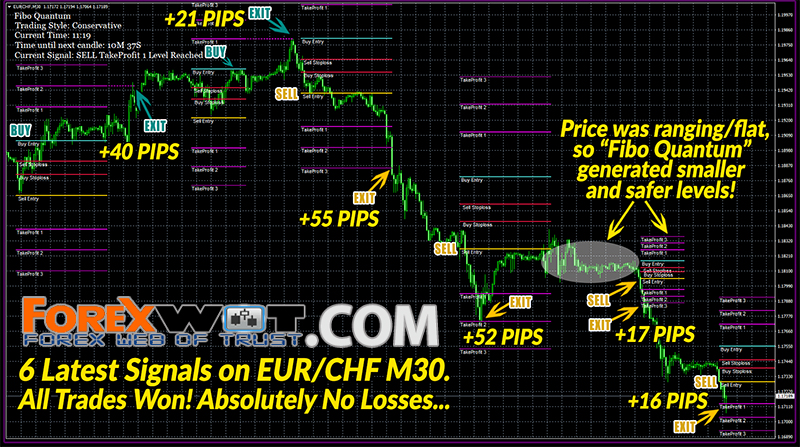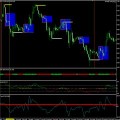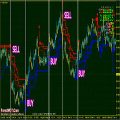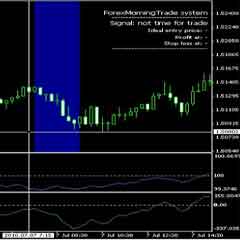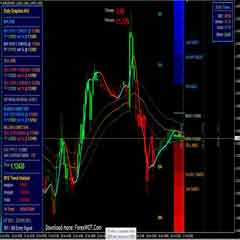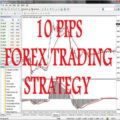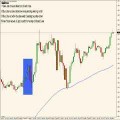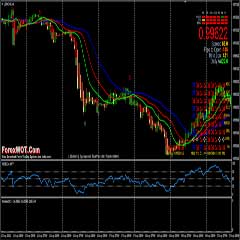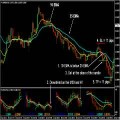There are four basic principles of forex market price behavior which have held up over time. Confidence that a type of price action is a true principle is what allows a trader to develop a systematic approach.
The following four principles can be modeled and quantified and hold true for all time frames, all markets. The majority of patterns or systems that have a demonstrable edge are based on one of these four enduring principles of price behavior. Charles Dow was one of the first to touch on them in his writings.

PRINCIPLE ONE: A Trend Has a Higher Probability of Continuation than Reversal
This is one of the basic tenets of Dow theory. An up trend is defined as BOTH a higher high and a higher low, and vice versa for a downtrend.
For example, in order to reverse from an up-trend to a down-trend, the market must make a lower low and a lower high and then turn DOWN from there. If the market is in a well-defined trend, the largest price swings tend to occur in the direction of the trend.
When the price is moving in a clearly defined trend, there are numerous strategies for entry based on the small retracements that occur along the way. These reactions allow the trader to find a tight risk point while still playing for a new leg in the direction of the trend.
A few notes on trends:
- Once a trend is established, it takes considerable power and time to turn it.
- A major trend seldom reverses without warning, such as a pronounced loss of momentum followed by a period of accumulation or distribution, or a buying or selling climax.
- In strong trends, reactions become shallower as the trend progresses.
- The absence of any pattern or swing in the price implies a continuation of the prevailing trend. The strongest trending action tends to be accompanied by a decrease in volatility. This could be describes as a methodical eating away of overhead supply, or a slow, steady price deterioration in the case of a downtrend.
- Trends tend to begin after the market has wound down to an equilibrium level. Just as volatility collapses in the middle part of a trend, price action can become more parabolic in the later stages of a trend. In some extreme cases, 75% of the gains can come in the last 20% of the move.
PRINCIPLE TWO: Momentum Precedes Price
If momentum makes a new high or low, the price high or low is most likely yet to come. Momentum is one of the few “leading” indicators. Elliot used the term “impulse” to refer to an increase in the market’s momentum.
Impulse indicates an imbalance in the supply demand equation and most often occurs in the direction of the prevailing trend. A trader should look to enter in the direction of the market’s initial impulse. New momentum highs can be made in both a trending environment, or on a breakout of a trading range. New momentum highs or lows should correspond with a new price high or low as well.
Momentum can be defined using a number of different types of calculations or oscillators. A simple rate of change, such as a 2 or 10-period rate of change is a momentum indicator.
Moving average oscillators or an RSI will make new highs or lows when momentum makes new highs or lows. Range is highly correlated with momentum. New highs or lows in a momentum oscillator accompanied by range expansion also confirms new momentum highs or lows. An increase in range is a sign of “impulse”.
A trader should look to establish new positions in the market on the first reaction following a new momentum high or low. The only exception to this rule is after a market makes a buying or selling climax. This is not a new momentum high or low, but an exhaustion point that creates a vacuum in the opposite direction.
A trader can enter a trade “at the market” when new momentum highs or lows are made following a breakout from a trading range. In an already established trend, a mild pullback or consolidation will be more likely then new momentum highs or lows following a breakout.
PRINCIPLE THREE: Trends End in a Climax
A trend will continue until it reaches a “buying or selling climax”. This tends to be marked by an increase in volatility and volume. Ideally, there should also be a marked increase in the range.
A buying or selling climax indicates that the last buyer or seller has been satisfied. The market then usually begins a process of backing and filling, testing and retracing, and in some cases, has a greater reaction in the opposite direction.
Trends tend to go further then we think they will and often, the price “overshoots” on the extremes. Price is at a new level and nobody has had a chance to get comfortable with the new levels.
The market will tend to begin a testing process in both directions until it reaches a new equilibrium level.
It is rare that a market immediately begins a sustained downtrend after it has been in an up trend. Thus, a trader should be prepared to trade in both directions for a while after a trend has ended and not be too eager to set positions in the opposite direction. The process of consolidating back to a new equilibrium point can be a long and drawn out process.
There are a smaller percentage of times where a market makes a “V” spike reversal following a buying or selling climax. This is the most powerful pattern in technical analysis as it creates a vacuum to the other side. In these situations, the market sharply reverses its direction without the normal consolidation period. This type of pattern does not happen very often, but has powerful forecasting implications when it does.
PRINCIPLE FOUR: The Market Alternates between Range Expansion and Range
Contraction! Price action tends to alternate between two different states. The market is either in a
trading range environment trying to wind back down to an equilibrium level, or it is expanding in range with impulse, indicating a persistence supply demand imbalance.
This mark up or mark down phase persists until it reaches a new level. One a new level is reached; the testing process will begin all over again as the market winds back down to an equilibrium level. And, once again, when a market has narrowed in range and found an equilibrium level, it is difficult to predict the direction of a breakout.
On occasion, the market will move first in one direction and then move sharply in the opposite direction.Volume is a useful confirmation took that the range expansion is for real.

